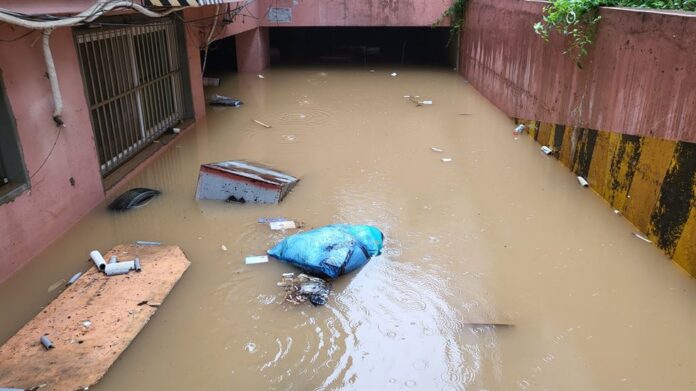South Korea has been hit by the heaviest rains in 80 years, leading to severe flooding. According to reports, at least 9 people died, 17 were injured, and 7 went missing in Seoul as floods submerged streets, buildings, vehicles, and humans. Seoul floods prompted the authorities to ban semi-basement flats after 2 women and a 13-year-old girl died after being trapped in one of those apartments. These tiny flats are popular among low-income citizens but provide no safety against floods. The city has banned the use of such flats for residence and stopped providing permits to construct new ones. It is also planning to convert the existing ones into non-residential buildings.
Seoul Floods Expose Danger of Living in a Banjiha
The semi-underground flats are known as ‘banjiha’ in the local context. They are known for cheaper rents and worse living conditions. These flats were built halfway underground because they were meant to serve a different purpose than residency. Initially, during the inter-Korean war in 1953, these buildings acted as bunkers to protect the citizens. After that, they were mostly warehouses until rapid population increase and urbanization led poor citizens to rent out there. As they were constructed in a bunker style, the apartments are 5 to 7 levels below the street level. They might have provided protection against war but not against the Seoul floods.
Banjihas represent not only the state of poverty but also the significant social divide in South Korea. The social status of the person is often judged after finding out how higher up he lived from the street.
Why are They Called Parasite-Style Flats?
Before the Seoul floods, the 2019 Oscar-winning film Parasite increased the awareness about the risks of living in these flats. Director Bong Joon-ho perfectly pictured life in banjihas and wealth disparity across the nation. The horror flick highlighted how the lower struggled in banjihas while the rich enjoyed carelessly in huge mansions. After the film’s global success, the government announced to support 1500 households so they could improve their living conditions in those buildings.
According to records, there are about 200,000 such flats in Seoul. They reek of mould and dampness, which also causes the stench to reach the floors, walls, beds, and even clothes. Sewage often clogs up, adding to the smell problem. Living in a banjiha can certainly take a toll on a person’s psyche, as depicted by the film in many instances.
Revising Building Laws
The rescuers failed to save the victims of the Seoul floods living in a banjiha because they could not reach them. The city authorities have given the owners 20 years to convert the buildings for non-residential use, such as parking lots or storage units. Seoul also said that it would support the banjiha residents in moving to public rental housing.


